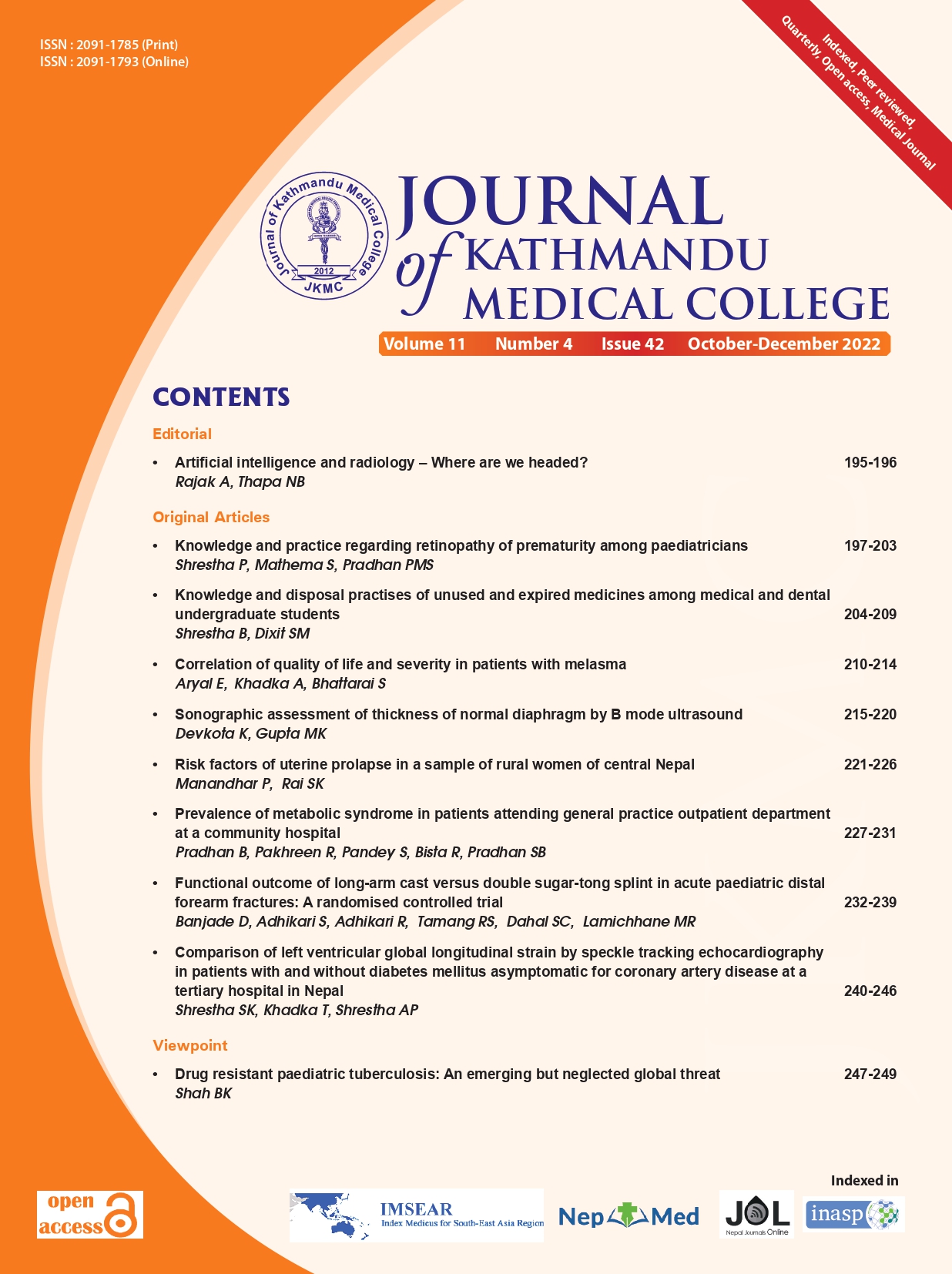Correlation of quality of life and severity in patients with melasma
DOI:
https://doi.org/10.3126/jkmc.v11i4.53551Keywords:
Melasma, Modified melasma area and severity index, Quality of lifeAbstract
Background: Melasma is a disorder of acquired facial hyperpigmentation, typically affecting young females. It is known to cause a great psychological impact and a significant negative effect on a patient’s quality of life.
Objectives: To explore the correlation between the quality of life in melasma patients and the severity of melasma.
Methods: This hospital-based, analytical, cross-sectional study was conducted from 2020 October to 2021 December in the Department of Dermatology, Venereology and Leprology of Kathmandu Medical College after institutional ethical clearance, in 101 patients recruited by convenience sampling. The quality of life was calculated using the Nepali version of the Dermatology Life Quality Index (DLQI) questionnaire and severity of melasma was calculated using modified Melasma Area and Severity Index (mMASI). Data analysis was done by SPSS v.24.
Results: The study included 101 patients of melasma with a young female preponderance. Seventy-eight (75.7%) being female and 43 (42.6%) being between the age of 21-30 years. The mean DLQI score was 10.39 ± 3.22; interpreted as having a ‘very large effect on a patient’s life.’ While the mean mMASI score was calculated to be 5.53 ± 2.69; interpreted as a melasma severity score (MSS) of ‘moderate severity.’ A significant positive moderate correlation r = 0.431 (p <0.001) was observed between mMASI and DLQI.
Conclusion: Melasma is a common pigmentary disorder that has a very large effect on the patient’s quality of life and this correlates directly with the severity of melasma.
Downloads
Downloads
Published
How to Cite
Issue
Section
License
Copyright (c) 2022 Journal of Kathmandu Medical College

This work is licensed under a Creative Commons Attribution-NonCommercial 4.0 International License.
Copyright © Journal of Kathmandu Medical College
The ideas and opinions expressed by authors or articles summarized, quoted, or published in full text in this journal represent only the opinions of the authors and do not necessarily reflect the official policy of Journal of Kathmandu Medical College or the institute with which the author(s) is/are affiliated, unless so specified.
Authors convey all copyright ownership, including any and all rights incidental thereto, exclusively to JKMC, in the event that such work is published by JKMC. JKMC shall own the work, including 1) copyright; 2) the right to grant permission to republish the article in whole or in part, with or without fee; 3) the right to produce preprints or reprints and translate into languages other than English for sale or free distribution; and 4) the right to republish the work in a collection of articles in any other mechanical or electronic format.




